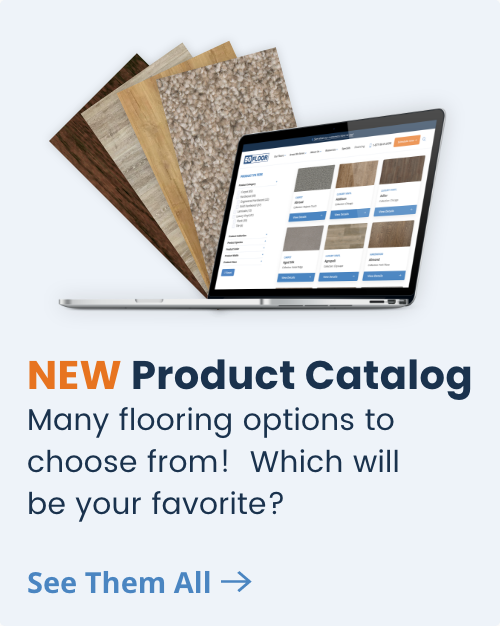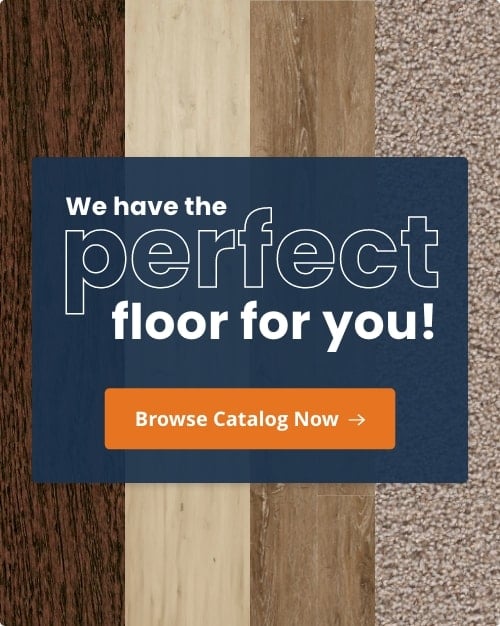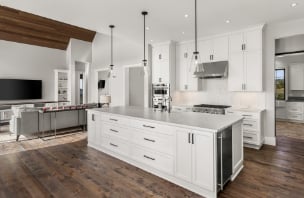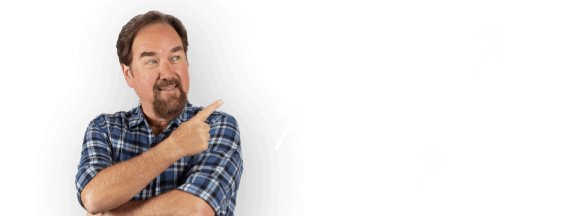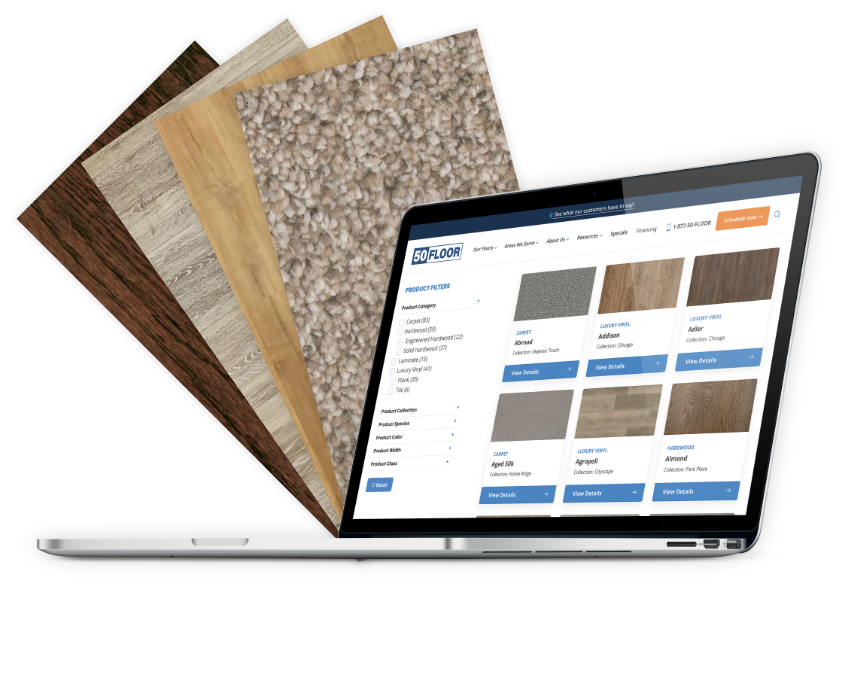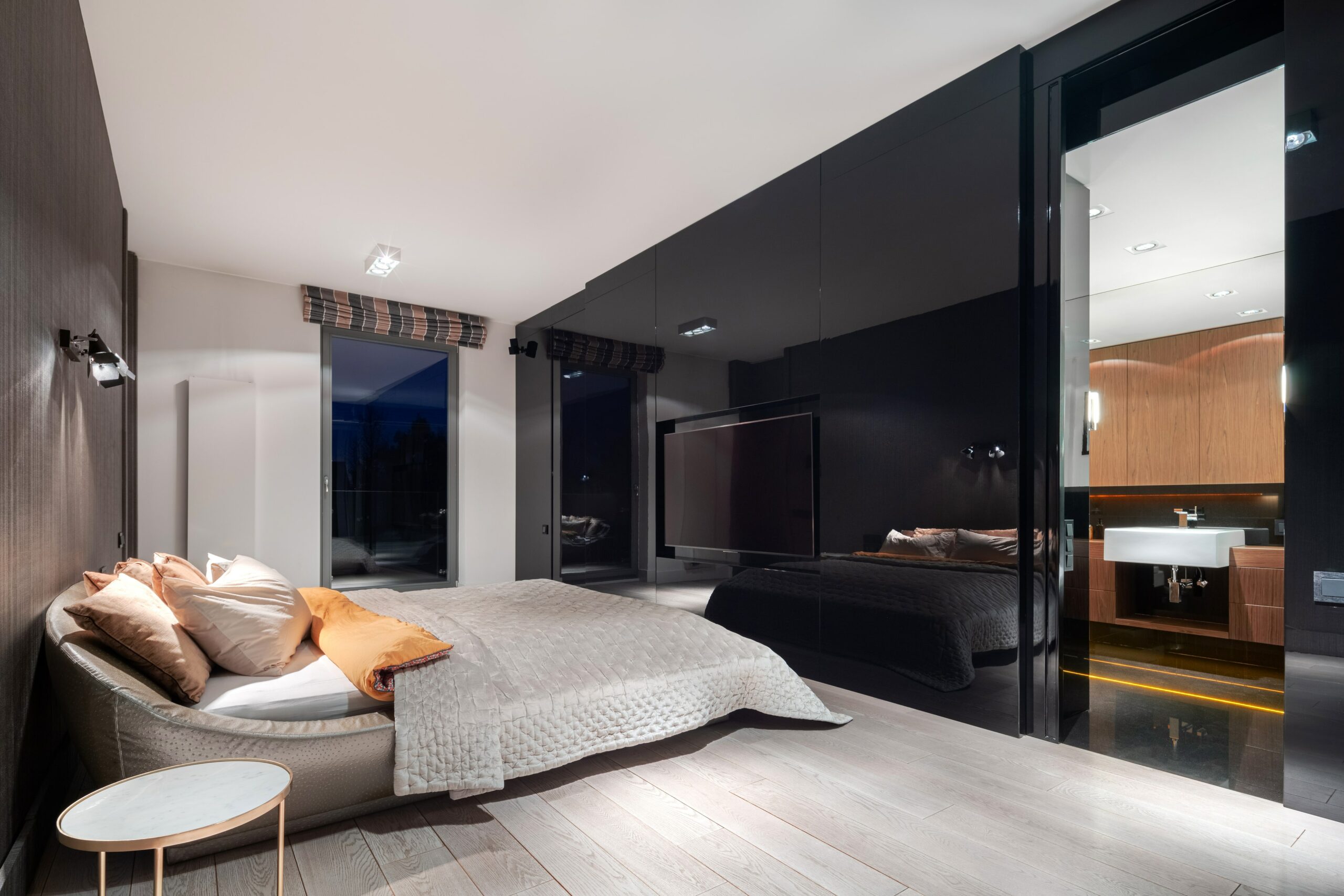Luxury vinyl plank (LVP) flooring offers a beautiful and durable option for homes, but even the most stunning floor can’t escape the fading effects of sunlight.
This page will help protect your LVP floor from sun damage and help you understand how UV rays can degrade your floor.


What is UV Protection for LVP Floor?
UV protection for LVP flooring refers to strategies that shield your floor from the damaging effects of ultraviolet (UV) light rays from the sun.
How UV Rays Harm LVP Floors
UV light can degrade vinyl flooring over time. This degradation, called photodegradation, weakens the chemical bonds within the material, potentially causing it to become brittle, cracked, and discolored.
The severity of this damage depends on several factors, including the intensity and duration of sun exposure, the thickness and composition of the vinyl itself, and the presence of any protective coatings.


Why is UV Protection Important for LVP Floors?
UV protection is crucial for LVP floors for several reasons:
- Preserves Appearance: UV protection helps maintain the aesthetic appeal of your LVP flooring for a longer period of time. Unprotected LVP floors exposed to sunlight will gradually fade over time. This can be especially noticeable in areas with direct sun exposure, leading to uneven coloring and a loss of the floor’s original vibrancy.
- Maintains Structural Integrity: UV protection helps safeguard the structural integrity of your LVP floors, ensuring they last longer and require less frequent replacement. Beyond aesthetics, UV radiation can weaken the chemical bonds within the LVP material itself.
- Extends Floor Lifespan: UV protection strategies significantly extend the lifespan of your LVP flooring. Which also means long-term cost savings, as you won’t need to replace the flooring as frequently.
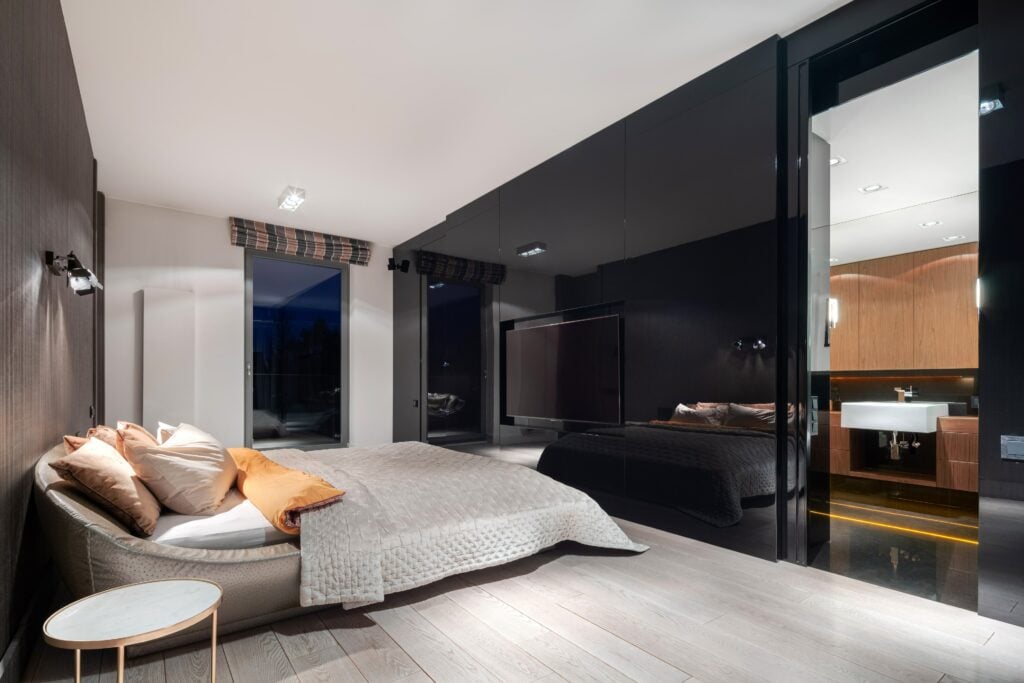

What Are the Sources of UV Exposure?
Location/Position of Windows
Windows facing south-facing are more vulnerable to direct sunlight, increasing the likelihood of UV damage. Keep this in mind when you’re planning to have LVP flooring installed in your home.
Size of Glass Doors
Large glass doors, including sliding or bi-fold varieties, amplify a room’s natural light and visual appeal but at the same time increase the risk of UV exposure. The broader the expanse of glass, the greater the potential for UV-induced deterioration—which can be harmful to LVP flooring.






What Materials are Used for UV Protection?
LVP floors achieve UV protection through two main approaches:
- 1. Inherent Material Properties: Certain vinyl formulations inherently possess better UV resistance. This can involve:
- Special Addiments: Manufacturers incorporate UV absorbers directly into the vinyl material. These act like tiny shields, absorbing UV radiation before it can damage the material’s structure or color. Examples include benzotriazoles and hydroxyphenyl-benzotriazoles (HBT).
- Pigments: Some pigments used in LVPs, like titanium dioxide, naturally offer UV protection by reflecting or scattering UV rays.
- Surface Treatments: A protective layer applied to the LVP surface can significantly enhance UV resistance. Common examples include:
- Wear Layer: Many LVPs have a wear layer made from a tough, UV-resistant material like urethane or a ceramic-based compound. This layer acts as the first line of defense against UV rays.
- Topical Coatings: Some manufacturers offer topical UV-cure coatings that can be applied to the LVP surface for additional protection. These coatings typically create a clear, invisible barrier that absorbs or reflects UV radiation.






Ways to Protect LVP Flooring from UV Rays
UV Protective Coatings
UV protective coatings function as an essential shield for LVP flooring, employing a dual-action mechanism that involves absorbing or reflecting harmful ultraviolet rays.
These coatings, crafted from polyurethane or acrylic-based materials, are applied over the flooring surface. This application creates an invisible barrier that effectively prevents UV light from penetrating the floor and causing damage such as fading, discoloration, or material degradation.
The chemical composition of these coatings is specifically engineered to interact with UV rays in a way that maximizes protection. This ensures the underlying floor remains shielded from the adverse effects of sunlight exposure.
Given that the protective qualities of the coating can diminish over time, periodic reapplication is recommended to sustain the highest level of UV defense.






How Often Should the UV Coating Be Applied?
It depends on a product’s performance under the unique conditions of the environment. It could range from a couple of years to longer spans, underscoring the importance of regular monitoring for signs of wear. Timely reapplication ensures that LVP flooring is protected against the relentless challenge of UV damage.
Add Window Films
Window films act as invisible shields for your LVP flooring against UV rays. They contain UV blockers that act like tiny sponges, absorbing or reflecting a significant portion of the harmful ultraviolet radiation streaming through your windows. Window films prevent color fading and degradation on your LVP flooring.
Window films also function as miniature insulators, reducing the amount of heat that enters your home through the windows.
Window films with high UV blocking capabilities significantly slow down the fading process of your LVP flooring. This translates to vibrant and fresh-looking floors for a longer period, preserving the original beauty of your investment.
Additionally, window films can help regulate room temperature, making your space more comfortable year-round. This is especially beneficial in hot climates where sunlight can turn your LVP floors uncomfortably warm.
As an added bonus, by reducing heat gain, window films can contribute to lower energy bills. This is because your air conditioning system won’t have to work as hard to keep your space cool, leading to potential cost savings.






Protect Your LVP with Carpets
While window treatments and UV-resistant coatings offer a strong defense against sun damage for your LVP flooring, strategically placed carpets can be another layer in your protective arsenal.
Carpets act as physical barriers, blocking sunlight from directly hitting specific areas of your LVP floor. This is great for high-traffic areas that receive large amounts of sunlight throughout the day.
Identify areas of your LVP floor that receive the most direct sunlight, such as in front of windows or patio doors. This is the prime location for placing your area rugs. Consider the size of the rug and ensure it covers the most sun-exposed sections of the floor.
While carpets and rugs offer sun protection, prolonged exposure to sunlight can also affect their own color vibrancy.
To prevent uneven fading on both your LVP floor and your rug, practice regular rotation. Every few months, rotate your rugs to different areas of the room. This ensures even wear and tear on both the rug and the LVP floor beneath it.
Use Blinds or Curtains
Blinds, curtains, or shades, allow you to adjust how much sunlight you want to get in your room and limit UV exposure.
Beyond their functional role in reducing UV exposure, they also contribute to the room’s privacy and decorative appeal. Integrating these solutions allows for a harmonious blend of functionality and style, ensuring the LVP flooring remains protected from UV damage while enhancing the overall ambiance of the home.






GET INSPIRED
LVP Flooring to MATCH YOUR STYLE
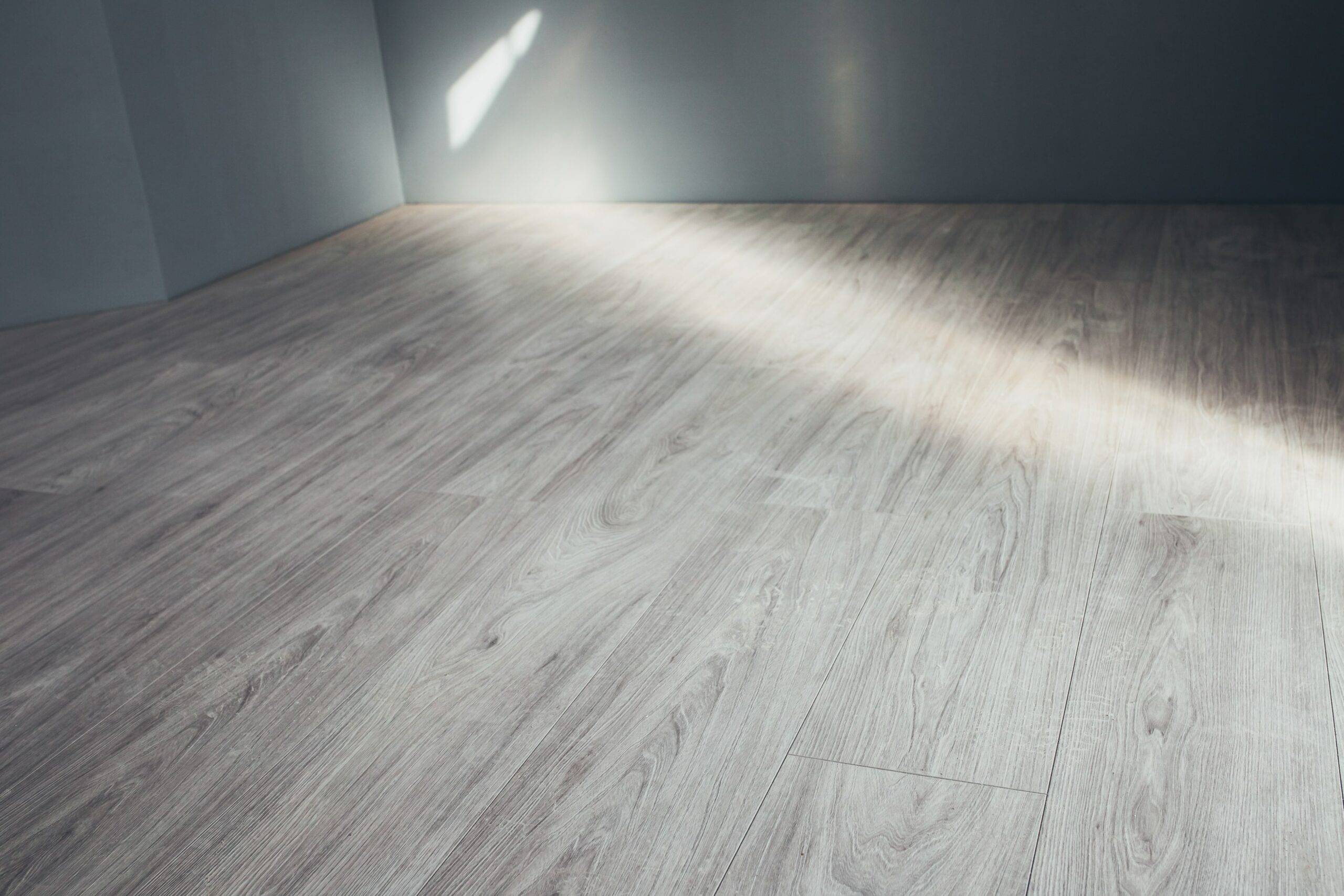

How Do I Choose the Right UV Protection?
If you have a hard time deciding, here are some easy tips.
Check Areas in Your House that Get Sunlight Often
Check the location and orientation of your windows–where they’re facing and how much sunlight gets in during the day. Take into account the position of the sun as the season changes so plan ahead on when to add blinds or carpets.
Balance Aesthetics with Functionality
If you’re worried about what your room will look like with all the UV protection, you can try to do a little redesign. It doesn’t have to be extravagant–you can move your furniture a little or change the positions of your tables to create that balance. For example, add tassels to blinds or curtains, all the while protecting your LVP flooring from the sun.
Check Your LVP Floor’s UV Resistance
Some LVPs have pigments or additives that offer a natural defense, while others rely solely on the wear layer’s thickness. Knowing this will help you determine if additional protection is needed.
